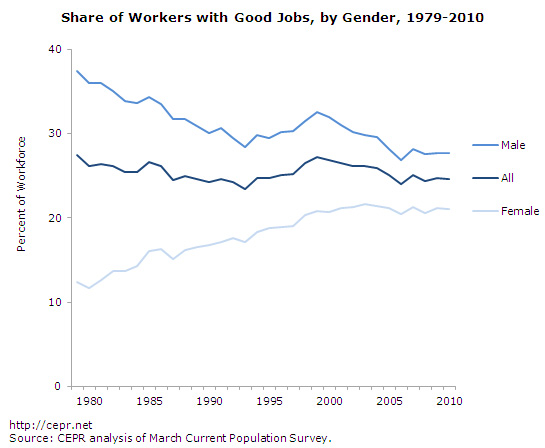August 03, 2012
This week, I’ve looked at trends over the past 30 years in health insurance and retirement plan coverage for workers. But, what has happened to good jobs overall? In a report released this week, John Schmitt and I calculate the share of the workforce in good jobs by gender from 1979 through 2010 (the most data available).
Overall, the share of workers with a “good job” by our definition fell from 27.4 percent in 1979 to 24.6 percent in 2010, but the graph below shows large differences by gender. For women, the share in good jobs grew almost continuously, from 12.4 percent in 1979 to 21.1 percent in 2010. Over the same period, however, the men’s share fell almost 10 percentage points, from 37.4 percent to 27.7 percent.

The main reason for the improvement for women was the dramatic increase in their labor force participation. The labor force participation rate for women increased from 50.9 percent in 1979 to 59.3 percent in 2007, before the Great Recession drove the rate for men and women back down. (Over, the same period, the rate for men decreased from 77.8 percent to 73.2 percent). Despite the increase in women’s attachment to the labor market, however, women were still much less likely to be in a good job in 2010 than men were in the same year.
According to our definition, a good job has three components: it pays at least $18.50 per hour, offers health insurance at least partly paid by the employer, and provides some kind of retirement plan. As the overall share of good jobs declines, women and men are meeting in an awful middle.






